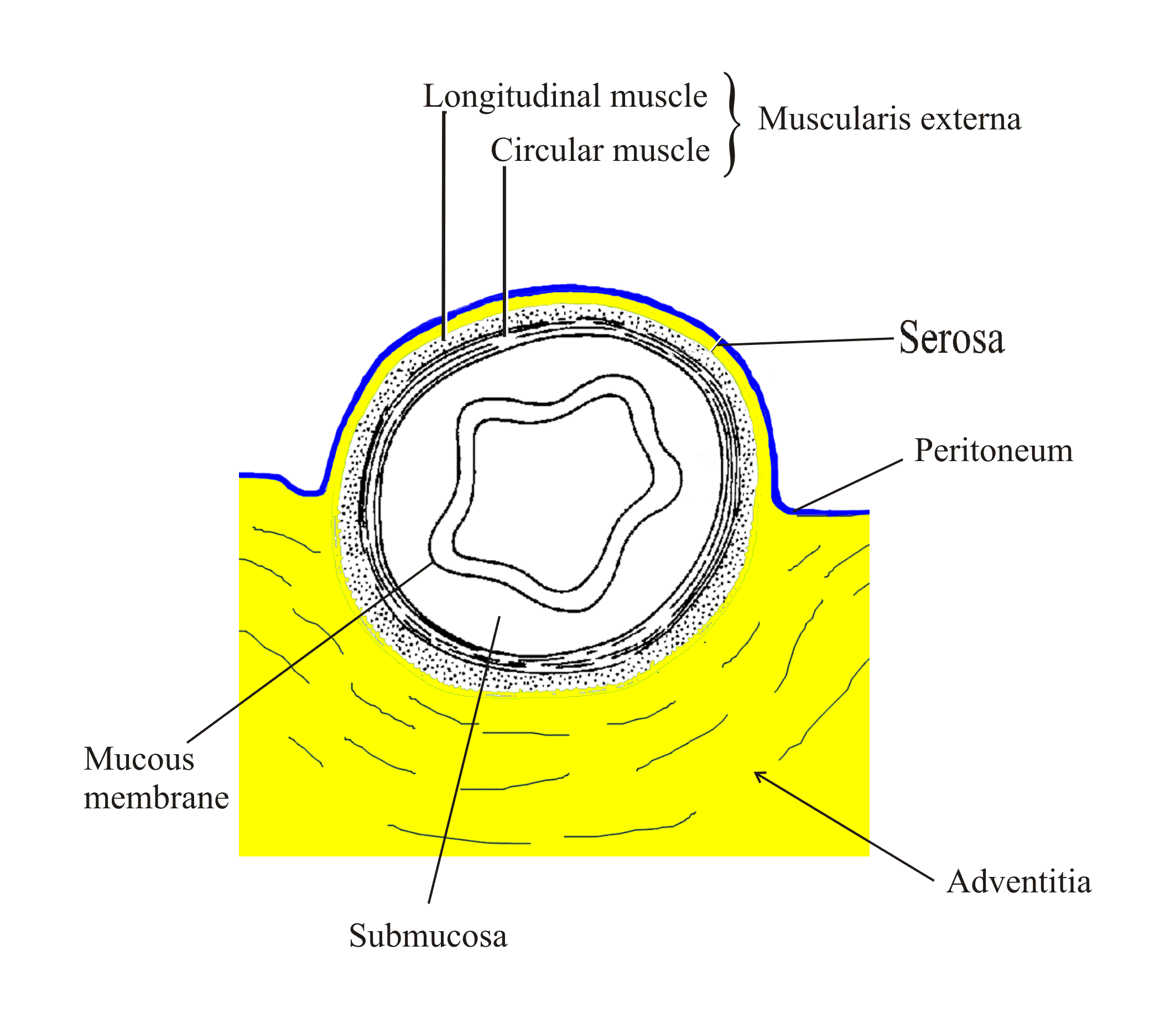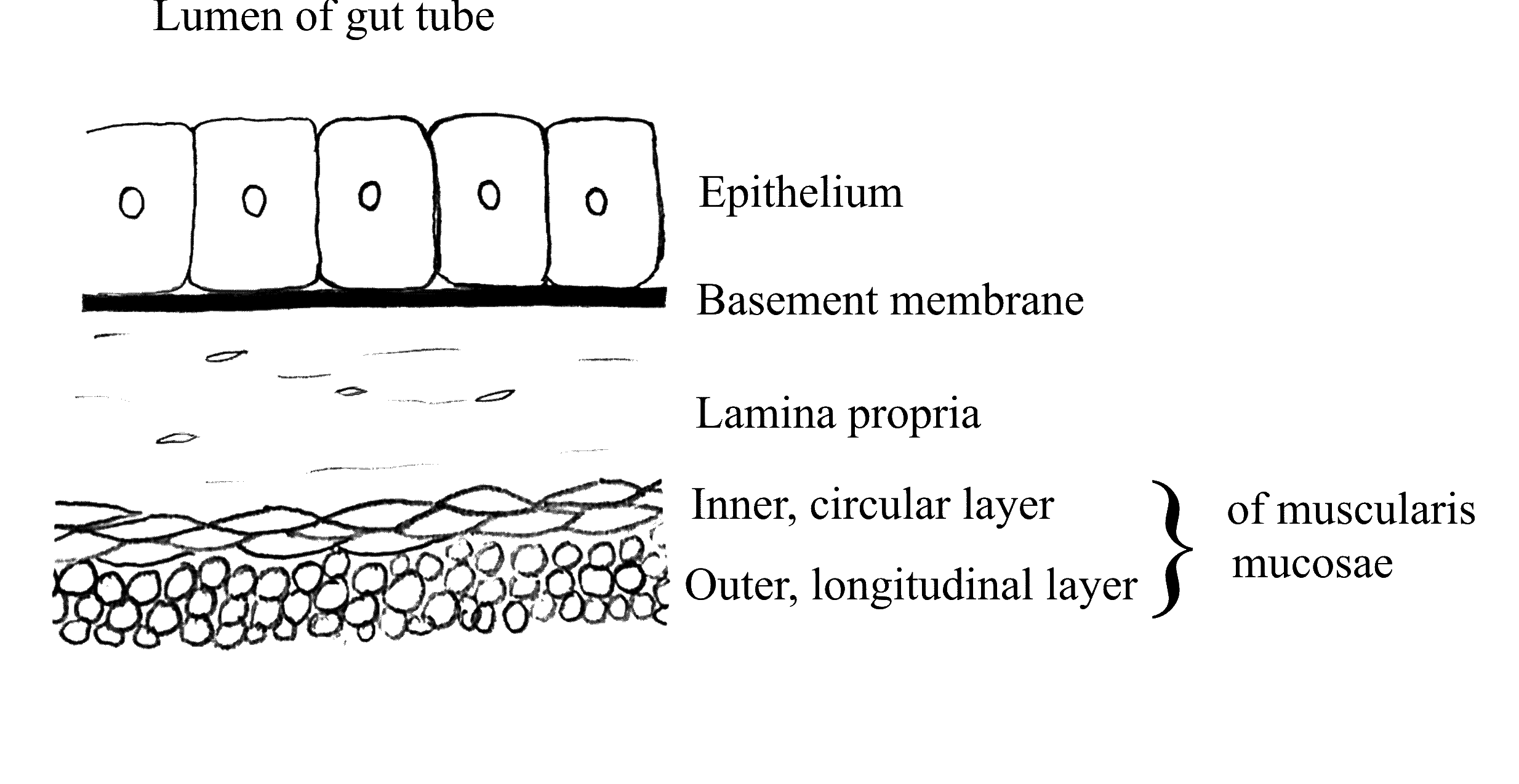AB1.H1.1 Plan of Gut Tube
Plan of Gut Tube:
- The alimentary canal is basically a tube that runs from the mouth to the anus
- This "gut" tube has a basic plan which is modified in different parts of the alimentary canal to best deal with the functional activity of that part
- The gut tube has four layers: mucous membrane, submucosa, muscularis externa and the adventitia/serosa
- The innermost layer is the mucous membrane. It has three layers
- An epithelium lines the lumen of the gut. This is the layer which changes most along the length of the tube
- The lamina propria is a thin connective tissue layer which lies deep to the surface epithelium
- There is also a muscularis mucosae which consists of two thin layers of smooth muscle - an circular layer and an outer longitudinal layer
- Deep to the mucous membrane is a thick layer of connective tissue known as the submucosa
- Deep to the submucosa is the muscularis externa
- This consists of two thick layers of smooth muscle - an inner circular layer and an outer longitudinal layer
- Its function is to move, by peristaltic contractions, the contents of the tube along from the mouth towards the anus
- The outermost layer is the adventitia/serosa
- This is composed of connective tissue
- An adventitia is found where the outer layer of connective tissue of the gut tube merges with connective tissue around an adjacent structure to hold the gut tube in place
- A serosa is found where the outer layer of connective tissue is covered with peritoneum allowing that part of the gut tube to move freely over adjacent structures
Lumen of Gut Tube:


